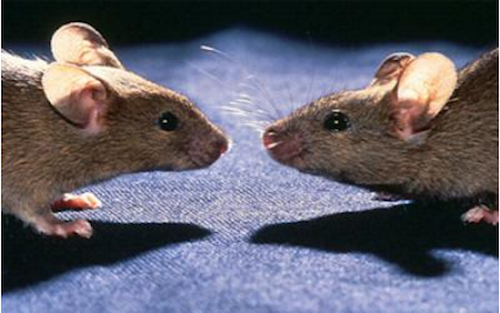|

CLICK ON weeks 0 - 40 and follow along every 2 weeks of fetal development
|
||||||||||||||||||||||||||||
|
Developmental Biology - Manipulating Disease Resistence Genetically Manipulating Disease Resistence Researchers collected and analyzed for injury-resilient retinae using mass spectrometry. Then they compared the protein profiles of these retinae to those of mice bred from parent mice untreated or unexposed to hypoxia. This identified many potential proteins and related biochemical mechanisms that generate intergeneration, injury-resilient genes. But, researchers wanted to identify specific proteins protecting against retinal diseases associated with inadequate blood supply or ischemic retinopathies. Once identified, those genes that were both functional and structural, could potentially become therapeutic targets for drug development. Other studies have shown how repetitive exposure to adverse stimuli can enhance susceptibility of first-generation offspring to disease. But Gidday believes this is the first study using mild, nonharmful stress - intermittent systemic hypoxia to provide first-generation offspring protection against the disease. Ischemic retinopathies are diseases resulting from some degree of prolonged, lower-than-normal blood flow to the retina. This compromises delivery of much needed oxygen and glucose to a very metabolically active tissue. The most well-known examples are glaucoma and diabetic retinopathy. But, the retina can also be deprived of blood flow acutely in a heart attack or stroke. Collectively, the resulting visual impairment suffered by these retinopathies is staggering, and in a large percentage of cases, complete blindness can result. Companion studies addressing safety of this treatment show that intermittent reduced oxygen stimulus (used to trigger injury resilience over generations), caused no injury to the most oxygen-sensitive cells of the brains of mice receiving treatment. Nor did it affect normal structure or function of retinas of adult offspring born from treated mice. "The direct inheritance of an induced phenotype is what Lamarck famously proposed in 1809, the year Darwin was born. Here we are, almost 200 years later, finding evidence to support this concept, despite it being largely displaced for the last 150 years by Darwin's Theory of Natural Selection. Abstract/Purpose Stress can lead to short- or long-term changes in phenotype. Accumulating evidence also supports the transmission of maladaptive phenotypes, induced by adverse stressors, through the germline to manifest in subsequent generations, providing a novel mechanistic basis for the heritability of disease. In the present study in mice, we tested the hypothesis that repeated presentations of a nonharmful conditioning stress, demonstrated previously to protect against retinal ischemia, will also provide ischemic protection in the retinae of their untreated, first-generation (F1) adult offspring. Methods Swiss–Webster ND4 outbred mice were mated following a 16-week period of brief, every-other-day conditioning exposures to mild systemic hypoxia (repetitive hypoxic conditioning, RHC). Retinae of their 5-month-old F1 progeny were subjected to unilateral ischemia. Scotopic electroretinography quantified postischemic outcomes. The injury-resilient retinal proteome was revealed by quantitative mass spectrometry, and bioinformatic analyses identified the biochemical pathways and networks in which these differentially expressed proteins operate. Results Significant resilience to injury in both sexes was documented in F1 mice derived from RHC-treated parents, relative to matched F1 adult progeny derived from normoxic control parents. Ischemia-induced increases and decreases in the expression of many visual transduction proteins that are integral to photoreceptor function were abrogated by parental RHC, providing a molecular basis for the observed functional protection. Conclusions Our proteomic analyses provided mechanistic insights into the molecular manifestation of the inherited, injury-resilient phenotype. To our knowledge, this is the first study in a mammalian model documenting the reprogramming of heritability to promote disease resilience in the next generation. Authors Jarrod C. Harman PhD, Jessie J. Guidry PhD and Jeffrey M. Gidday PhD. Acknowledgements The authors declare no competing financial interests. This is an open-access article distributed under the terms of the Creative Commons Attribution 4.0 International license, which permits unrestricted use, distribution and reproduction in any medium provided that the original work is properly attributed. Brann along with Dr. Ratna Vadlamudi, Molecular Biologist, Professor of Obstetrics and Gynecology, University of Texas Health, San Antonio, are Co-corresponding Authors of the study and Co-principal Investigators on the National Institute of Neurological Disorders and Stroke grant funding the research (Grant R01NS088058). Return to top of page. | Sep 18 2020 Fetal Timeline Maternal Timeline News  Lab developed gene resistant to Ischemic Retinopaty - is passed from parent to child. A first in mammals? Image CREDIT Wayne Potts, University of Utah.
| ||||||||||||||||||||||||||||

